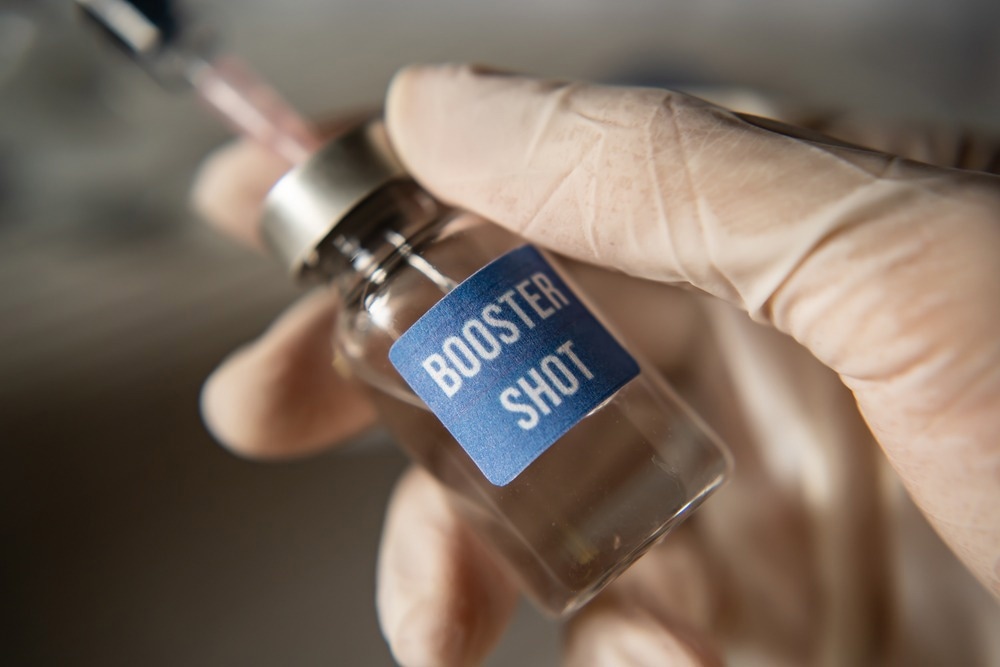In a recent report published by the Centers for Disease Control and Prevention (CDC) in the Morbidity and Mortality Weekly Report (MMWR), researchers reported on the immune protection conferred by monovalent coronavirus disease 2019 (COVID-19) vaccines and bivalent booster doses.
 Study: COVID-19 Incidence and Mortality Among Unvaccinated and Vaccinated Persons Aged ≥12 Years by Receipt of Bivalent Booster Doses and Time Since Vaccination — 24 U.S. Jurisdictions, October 3, 2021–December 24, 2022. Image Credit: Wachiwit/Shutterstock
Study: COVID-19 Incidence and Mortality Among Unvaccinated and Vaccinated Persons Aged ≥12 Years by Receipt of Bivalent Booster Doses and Time Since Vaccination — 24 U.S. Jurisdictions, October 3, 2021–December 24, 2022. Image Credit: Wachiwit/Shutterstock
Background
The continual emergence of novel severe acute respiratory syndrome coronavirus 2 (SARS-CoV-2) variants and antibody waning has reduced immunity against SARS-CoV-2. CDC advocated bivalent booster dose administration. In December 2021, SARS-CoV-2 Omicron subvariant BA.1 gained predominance in the United States (US), followed by the predominance of Omicron subvariants BA.2 and BA.4/5, and BA.4/5-associated variants comprised 78.0% of the dominant variants by December 24th, 2022.
On September 1st, 2022, the United States Food and Drug Administration (FDA) recommended the administration of bivalent booster doses comprising the BA.4/5 subvariant spike (S) protein for individuals above 12 years of age and subsequently extended to those above 6.0 months of age. Studies have reported that updated bivalent COVID-19 vaccines improve protection against SARS-CoV-2 infection and hospitalizations; however, the protection conferred by bivalent vaccines against COVID-19-associated deaths is unclear and requires further investigation.
About the report
In the present CDC’s MMWR report, researchers reported on the immune protection conferred by bivalent booster doses against SARS-CoV-2.
SARS-CoV-2 infection and death rate ratios (RRs) were determined by comparative evaluation of non-vaccinated individuals and COVID-19 vaccinees aged ≥12.0 years, based on the time elapsed since booster dose vaccination (original/monovalent or updated/bivalent) during the period of SARS-CoV-2 Delta variant and Omicron subvariants (BA.1, BA.2, and BA.4/5) dominance.
Weekly COVID-19 case counts (between October 3rd, 2021, and December 24th, 2022) and related mortality (between October 3rd, 2021, and December 3rd, 2022) by prime vaccinations and booster vaccinations, including updated/bivalent booster doses (during the week commencing on September 18th, 2022), were documented from 24 jurisdiction sites that regularly link COVID-19 surveillance information with the vaccination registries and death registries.
Data were analyzed based on the SARS-CoV-2 variant percentage estimates and the 2019 census estimates of the US. The mean weekly COVID-19 incidence and associated deaths were stratified based on the following age groups, 12 to 17 years, 18 to 49 years, 50 to 64 years, 65 to 79 years, and ≥80.0 years). The rate ratios were determined by dividing the rates among non-vaccinated individuals by those among COVID-19 vaccinees.
Results
In the late Omicron BA.4/5 period, non-vaccinated individuals had greater COVID-19-associated infection and death RRs compared to individuals who received bivalent booster doses (SARS-CoV-2 infection and mortality RRs of 2.8 and 14, respectively). The corresponding RR values among individuals vaccinated with monovalent booster doses were 2.5 and 5.4, respectively. Among older individuals, death rates among non-vaccinated individuals were significantly greater than among individuals who received bivalent boosters (for the 65 to 79 years group and the≥80 years group, RR values were 24 and 10, respectively. Individuals who received monovalent booster doses for the corresponding age groups showed RRs of 8.3 and 4.2, respectively.
For COVID-19-associated mortality, a gradual drop was observed in RR values from the SARS-CoV-2 Delta variant-dominant period (RR 51) to the initial BA.4/5 period (RR 7.4) among non-vaccinated individuals than those who received monovalent boosters between two weeks and two months. In the initial BA.4/5 period, for individuals boosted with monovalent vaccines, relative death rates gradually declined at 6.0 to 8.0 months, 9.0 to 11.0 months, and ≥12.0 months, with RR values of 4.6, 4.5, and 2.5, respectively.
Contrastingly, bivalent booster doses enhanced immunity against mortality (RR 15) at the end of the Omicron BA.4/5 period, and the immunity regained was greatest among older individuals. Among individuals aged ≥12.0 years, 21,296,326 SARS-CoV-2 infections and 115,078 related deaths were documented. The mean weekly COVID-19 incidence and deaths were greater among non-vaccinated individuals, across all periods, compared to monovalent vaccinees. Mean weekly COVID-19 case counts and deaths in the late Omicron BA.4/5 period were least among bivalent booster vaccinees.
COVID-19 incidence RRs (non-vaccinated individuals vs. bivalent COVID-19 booster vaccinees) were marginally greater than monovalent vaccinees in the late Omicron BA.4/5 period. COVID-19-associated death rates among non-vaccinated individuals were 14-fold greater than those who received bivalent boosters. The rates among monovalent vaccines were 2.6-fold to that among bivalent booster recipients in the late Omicron BA.4/5 period.
Death RRs among non-vaccinated individuals compared to monovalent booster recipients represented lowered vaccine effectiveness from the Delta wave (98.0%) to the Omicron BA.4/5 wave (87%). The bivalent boosters administered in the late Omicron BA.4/5 period enhanced immune protection against mortality, representing vaccine effectiveness estimates of 93.0%. A subgroup analysis of Omicron BA.2 and BA.4/5 dominant periods (between November 6th and December 24th, 2022) provided similar findings.
Based on the study findings, bivalent booster dose recipients in the US had marginally greater immune protection against SARS-CoV-2 infection and significantly greater protection against mortality than non-vaccinated individuals or those who received monovalent boosters. Bivalent booster-induced restoration of immunity was greatest among older individuals. The findings underpinned bivalent booster dose administration ≥2.0 months following prime or monovalent booster vaccinations.